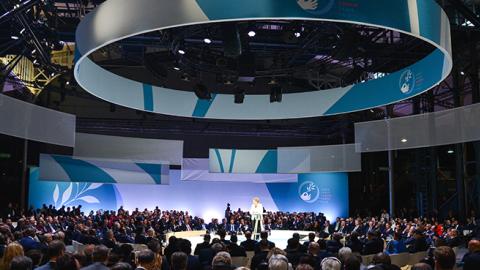We live in an increasingly interconnected and globalized world. With unlimited digital information and services at our fingertips and transformations in virtually every industry, technology is truly powering every aspect of our society and our modern life.
And yet, despite the many benefits of interconnectedness, there are some who wish to retreat into isolation, draw up fences and close these digital highways of information and services. However, fences are not our only concern. Even more worryingly, cyberspace is increasingly being used for nefarious purposes. In the last two years we have seen a surge in harmful cyberattacks, many with indiscriminate effects against ordinary people and businesses, intended to disrupt society. With the geopolitical fissions of the physical world now mirrored in the digital environment, the future of peace in the digital world cannot be regarded as a given. It is something we must fight for.
What does it take to achieve stability and peace in cyberspace?
With over a decade of experience working in this space, most recently as the Assistant Secretary General for Emerging Security Challenges at NATO, my role has been to develop strategies, policies and manage their implementation, in order to enhance cyber resilience, preparedness and defence-readiness. The key aim was to prevent cyber-war and ensure peace in cyberspace. I was glad to see this objective reaffirmed in this year’s NATO Summit Declaration, as Allies commit “to maintain international peace and security in cyberspace and to promote stability and reduce the risk of conflict, recognizing that we all stand to benefit from a norms-based, predictable, and secure cyberspace." This first-hand experience gives me an informed perspective on what it takes to prioritize prevention and channel efforts towards stability and peace in cyberspace.
Firstly, building capacity through broad, multi-layered education and training, as well as developing capabilities for cyber resilience and defence is essential. These aspects must be constantly prioritized and upgraded.
Secondly, a trust-based collaborative mindset and framework must be cultivated. As a dedicated promoter of NATO’s cyber-partnership with industry and academia, I remain a strong believer in the principle of “multistakeholderism." And I mean this in terms of genuine, trust-based multi-stakeholder approach, which is most important in cyberspace where the digital battlefield tends to shift, more and more, towards privately owned infrastructure and affecting civilians. That’s why industry and civil society share the same view as NATO, the EU or the UN, that we need to protect digital peace more than ever. Effective coordination among stakeholders based on the respective roles and specificities is key, as is the convergence towards the sheared goals.
Thirdly, the road towards digital peace ultimately implies establishing comprehensive cyber-stability regime, based on a wide commitment to principles, norms, rules as well as a relevant institutional framework and supporting mechanisms.
Place Cyber Stability on the Front Stage of Geopolitics
The Paris Peace Forum offers a great opportunity to place cyber peace and stability on the front stage of geopolitics, along with the other strategic challenges of our time. Many world leaders across every sector will unite in Paris next week to commemorate the centennial anniversary of the end of one of the darkest moments of European history. However, it will also be a moment to look into the future, show that we have learned the painful lessons of the past and explore the best ways to preserve peace both in the physical and the digital domains, which define our new reality and cannot be separated.
It is, therefore, highly symbolic that Paris will host next week, immediately after the Peace Forum, also the annual Internet Governance Forum. It will also offer a platform to highlight the important work of the Global Commission on the Stability of Cyberspace on the development of a timely “norms package” on responsible behavior in cyberspace. Furthermore, the Paris events will offer a high visibility context for the unveiling and promotion of many new promising initiatives and projects. I look forward to Microsoft’s “Digital Peace Project,” aimed at raising international awareness on the issue and rallying together stakeholders around the world to help lay the foundation and work together for a safer digital world.
Engage and Coordinate Efforts on the Road to Digital Peace
Not surprisingly, ongoing efforts aimed at cyber-stability, take place, also, beyond Paris. There is momentum in New York for the revival of the UN-Governmental Group of Experts (UN-GGE) process where governmental experts are examining cooperative measures to address cyber threats. There is further commitment to continue the efforts that have already started with the NATO Cooperative Cyber Defense Center of Excellence on providing a comprehensive and valuable study the applicability of existing international law in cyberspace, the EU on developing its Cyber Diplomacy Toolbox and the Organization for Security and Co-operation in Europe on confidence building measures for cyberspace. It is therefore important to harness the Paris momentum for more coordinated engagement towards cyber stability and peace.
Paris will capture the world’s attention, in the next few days, not just due to the highly symbolic Centennial. France’s leadership in creating a unique succession of events that highlight the inseparable link between peace in the physical and digital domains, as well as the potential of “multistakeholderism”, will not be missed. It is therefore my hope that leaders will not miss the golden opportunity to take home the Paris lessons, commitments, momentum and sense of urgency for coordinated action and leadership to make relevant progress on the road digital peace. This might also inspire a more ambitious European leadership role to this end.



















